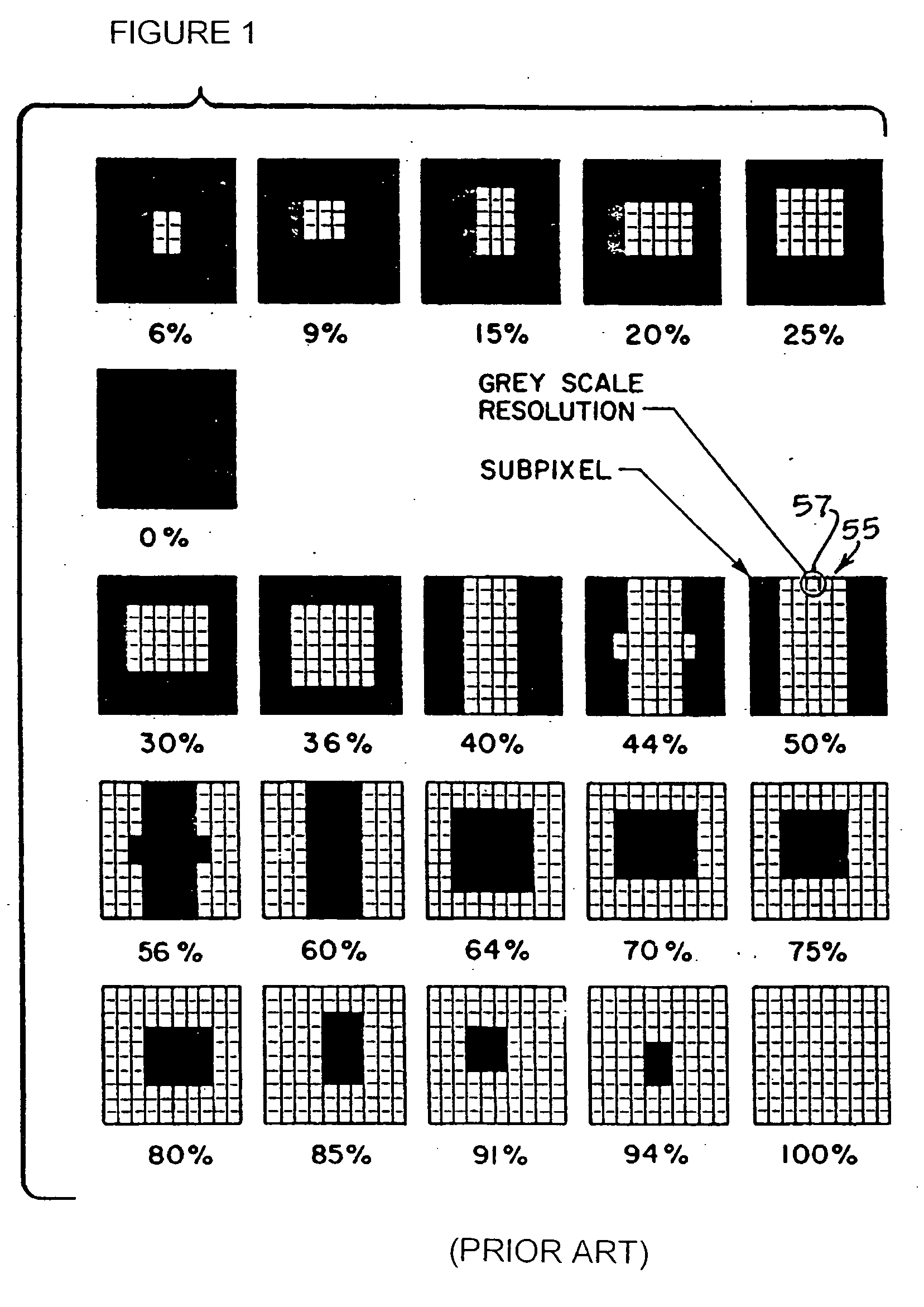Binary half tone photomasks and microscopic three-dimensional devices and method of fabricating the same
a three-dimensional device and photomask technology, applied in the field of bht bht bht photomasks and three-dimensional microscopic structures, can solve the problems of difficult for manufacturers to meet production requirements in a cost-effective manner, use of micro-machining tools, and inability to work well with commonly applied techniques for manufacturing integrated circuits
- Summary
- Abstract
- Description
- Claims
- Application Information
AI Technical Summary
Benefits of technology
Problems solved by technology
Method used
Image
Examples
Embodiment Construction
[0047] The present invention generally relates to improved BHT photomasks and microscopic three-dimensional structures made from such photomasks. The present invention is also directed toward a method for designing and fabricating BHT photomasks to be used in creating such microscopic three-dimensional structures (e.g., MEMS, micro-optics, photonics, micro-structures and other three-dimensional, microscopic devices). More particularly, the present provides a method for designing a BHT photomask layout, transferring the layout to a BHT photomask and fabricating three-dimensional microscopic structures using the BHT photomask designed by the method of the present invention. As will be seen below, the method of the present invention enables a photomask designer to design a BHT photomask to have continuous gray levels such that the change in light intensity between each gray level is both finite and linear. As a result, when this BHT photomask is used to make a three-dimensional microsc...
PUM
 Login to View More
Login to View More Abstract
Description
Claims
Application Information
 Login to View More
Login to View More - R&D
- Intellectual Property
- Life Sciences
- Materials
- Tech Scout
- Unparalleled Data Quality
- Higher Quality Content
- 60% Fewer Hallucinations
Browse by: Latest US Patents, China's latest patents, Technical Efficacy Thesaurus, Application Domain, Technology Topic, Popular Technical Reports.
© 2025 PatSnap. All rights reserved.Legal|Privacy policy|Modern Slavery Act Transparency Statement|Sitemap|About US| Contact US: help@patsnap.com



